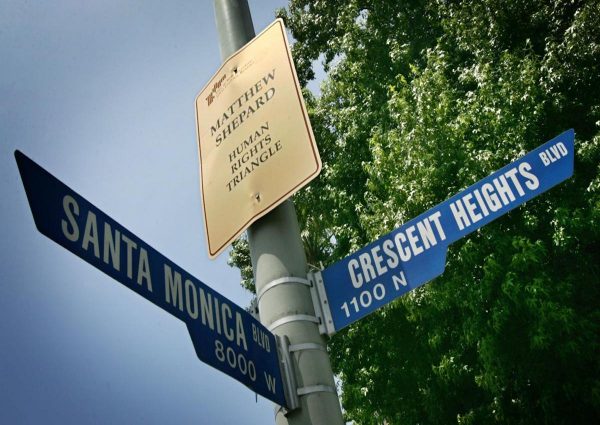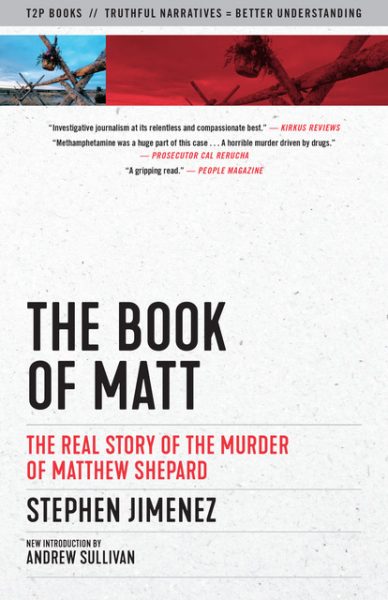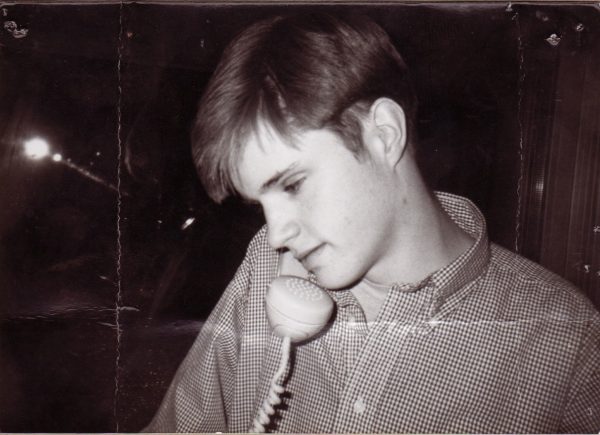
There’s a phrase sometimes credited to George Orwell or Randolph Hearst (no one quite knows the real source) that most professionals in the newspaper business hold as something of a sacred definition of their trade: “Journalism is publishing something someone doesn’t want you to print; all the rest is public relations.”
If I were to describe this tight, closely reported and engrossing account of the brutal murder of Matthew Shepard in one word, it would be: journalism.
No one wanted Steve Jimenez to report this story, let alone go back and back to Laramie, Wyoming, asking awkward questions, puzzling over strange discrepancies, re-interviewing sources, seeking a deeper, more complex truth about the ghastly killing than America, it turned out, was prepared to hear. It was worse than that, actually. Not only did no one want to hear more about it, but many were incensed that the case was being re-examined at all. Considerable political forces, including much of the gay and lesbian establishment and mainstream press, attempted to prevent this story from getting wider attention; they targeted Jimenez’s reputation as a journalist; and they insisted that all the myriad details in this book were concocted or invented. All of it was fabricated, they claimed, a “conspiracy theory”, while refusing to refute specific facts or details that Jimenez had uncovered. And Steve as a gay man was subjected to even more calumny: that he was a traitor to the cause, advancing the interests of the antigay haters and bigots by giving them some reason to debunk the heinous crime.

The truth, you see, was already out there. It was crystal clear, and carried a simple message: that hate is everywhere in America, especially in red states, and every member of a minority is under constant danger of being attacked, or even killed. And the narrative was gripping and horrifying, something out of a horror movie. A diminutive, innocent, boyish young gay man, Matthew Shepard, walked into a bar in a deeply red state one night, and two strange men lured him into their pick-up truck in order to rob him, and, after Matthew allegedly made a pass at one of them, Aaron McKinney, McKinney went berserk with raging homophobia, and assaulted him. He then drove Shepard down a dark, rural, lightly traveled road, and took his ghastly revenge: bludgeoning the young gay man in the head with unbelievable and unconscionable force, sadism and ferocity, tied him to a fence, and left him there to die, without any means of escape. Matthew was discovered the following day, and rushed to the hospital, but never regained consciousness and died six days later.
Almost instantly, he became a symbol of the toll, viciousness and pervasiveness of hate.
And he was a perfect symbol: young, pretty, tiny, he presented himself to the world as the most acceptable form of a young gay man, almost a boy. (The man who discovered his bloodied, tortured body thought he was around 13 years old.) His father described him as “an optimistic and accepting young man who had a special gift of relating to almost everyone. He was the type of person who was very approachable and always looked to new challenges. Matthew had a great passion for equality and always stood up for the acceptance of people’s differences.” A champion of toleration and openness had been brutally beaten to death for being gay. The lesson could not be clearer, nor the tragedy deeper. To add a touch of perfection to the picture, his murderers were also out of a Hollywood movie script: redneck losers from a rural state obviously brimming with anti-gay hatred.
I remember vividly my own response to the news: an involuntary spasm of disgust, nausea and terror. It was, after all, a classic gay nightmare, the kind of thing that kept me and countless others in the closet for years: a possible hook-up with a stranger that could go terribly wrong. Just the bare facts of the story as we heard them – gay kid murdered by rural bigot, left to die –
cemented in our minds and psyches everything we had feared as we grew into gay adulthood. We instantly believed we knew the truth – because it had haunted our souls most of our lives. And what other motive could there be for savagery like that? It reeked of unhinged, irrational, violent homophobia.
It took some time before it emerged that the first mention that the murder was an anti-gay hate crime was when the girlfriend of Aaron McKinney, Kristen Price, came up with the idea in the panicked hours after the assault. Price later conceded she had made that up. But the early rumor was enough for the media to run with the story of hate until, within days, the outlines had been set, and the stakes raised. Suddenly a horrifying murder was a way to reveal just how deadly much of the country allegedly was for gays and lesbians, and to evoke sympathy and horror from every segment of society. That horror could help advance the argument for gay equality in a period when it was very much in the headlines and the Congress. It was a time when marriage equality was in the news, and when “Don’t Ask, Don’t Tell” was the military’s policy toward gay service members. The message was particularly useful for gay rights groups like the Human Rights Campaign, whose fundraising sky-rocketed in the wake of the shocking murder.
But it wasn’t true. The story, as you will read in these pages, is far darker, murkier and revealing than a classic hate crime. Re-reading this book years later, it seems to me that the murder had absolutely nothing to do with homophobia. It involved rather what was then a growing scourge of crystal meth use among both the rural poor and the gay male community at the turn of the century – and the murder of a young gay man in rural Wyoming was a classic case of where the two meth populations met and overlapped. As the cops eventually conceded, this was a drug-related murder, related to a meth delivery, a desperate McKinney seeking money or another hit, and a naive kid caught up in a world he didn’t fully understand. Shepard knew McKinney, his murderer, before their encounter at the bar that night; and the two had been sexually involved on and off for quite some time. More telling to me was that the savagery of the murder is far more plausibly explained by the fact that McKinney had been on a meth binge of several days and nights before he lost his mind in rage, than that he had instantly become a raging bigot, with no record of homophobia before.

Sometimes I imagine what would have happened if we had always known the more complicated truth. The lesson would be about a drug that was cutting a swathe through the middle of the country, especially in rural areas, and devastating gay men in cities in the wake of the AIDS epidemic. Vulnerable souls – seeking confidence or release or exhilaration for a while – were prey for this particular poison, and gay men, often surviving childhood trauma or laced with self-hatred or sexually compulsive, seemed particularly at risk. If we had been able to have a serious national conversation about this otherwise concealed epidemic of drug abuse, especially among gay men, we might have been able to save some lives. In the two decades since, I’ve seen so many men fall under meth’s devastating spell – their lives ruined, their very personalities altered, their bodies wasted away, their teeth rotten, their souls absent, and their rate of recovery surpassingly low. For gay men in 1998, meth was a far, far greater danger than redneck strangers. And it still is. But we decided to focus on what was acceptable to speak about, rather than what was staring us, more embarrassingly, in the face.
I’m proud to introduce a re-issue of this book. I urge you to read it carefully and skeptically, to get to know the characters involved, and to see better how life rarely fits into the neat boxes we want it to inhabit. That Matthew Shepard was a meth dealer and meth user says nothing that bad about him, and in no way mitigates the hideous brutality of the crime that killed him; instead it shows how vulnerable so many are to the drug’s escapist lure and its astonishing capacity to heighten sexual pleasure so that it’s the only thing you want to live for. Shepard was a victim twice over: of meth and of a fellow meth user, driven to a form of madness that sustained meth-use invariably produces. Gay men did not want this to be known – because it muddied the narrative of sainthood for Matthew, and aired some dirty laundry many in the community wanted kept out of sight. Straight people who wanted to display how concerned they were had a unique chance to weigh in with genuine sadness, shock and pity, and were not inclined to ask questions. And then there was the huge pressure not to query a murder that seemed to have no purpose if it didn’t advance gay equality.
So we now have the body of Matthew Shepard interred, like a martyr to homophobia, at the National Cathedral in Washington DC. And you begin to understand how saints are indeed made: by legend, and by orthodoxy. What Jimenez has done is to peer behind this facade and tell us the awful, messy, tragic, human truth. It seems to me we can honor the memory of Matthew Shepard by refusing to lie about him anymore. And this book is a start.
The latest and updated edition of Steven Jimenez’s “The Book of Matt” can be purchased online.

This part “As the cops eventually conceded, this was a drug-related murder, related to a meth delivery, a desperate McKinney seeking money or another hit, and a naive kid caught up in a world he didn’t fully understand. Shepard knew McKinney, his murderer, before their encounter at the bar that night; and the two had been sexually involved on and off for quite some time. More telling to me was that the savagery of the murder is far more plausibly explained by the fact that McKinney had been on a meth binge of several days and nights” Yea, never happened.… Read more »
I learned about the meth connection early on in the Matthew Shepard tragedy. Yes, still a tragedy, but Matt was became the over hyped pretty little white boy who got beat up. No one wanted to listen to, read and acknowledge the meth connection when it became apparent that was the driving factor in this tragedy. If Matt had been a POC we never would have heard about it, or only in passing. Its not news until it happens to a white person.
Thank you Steve